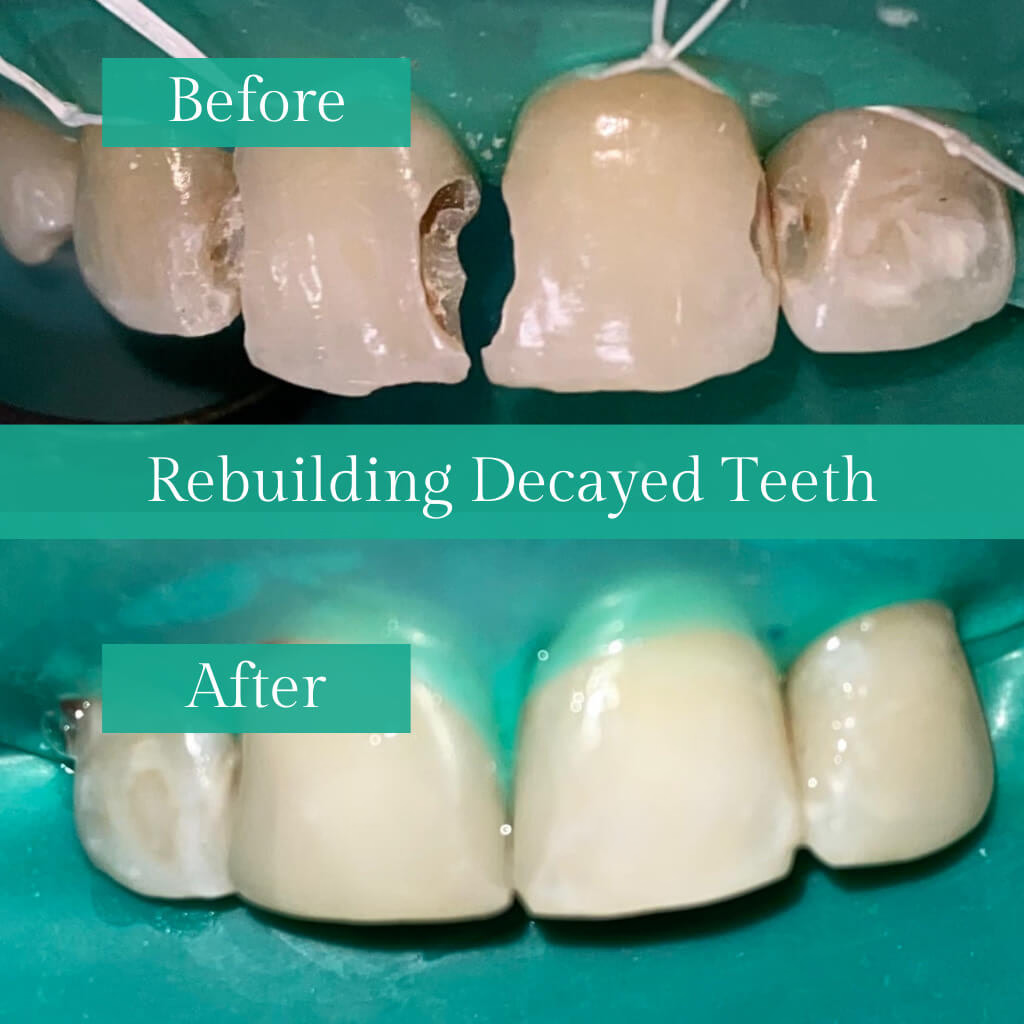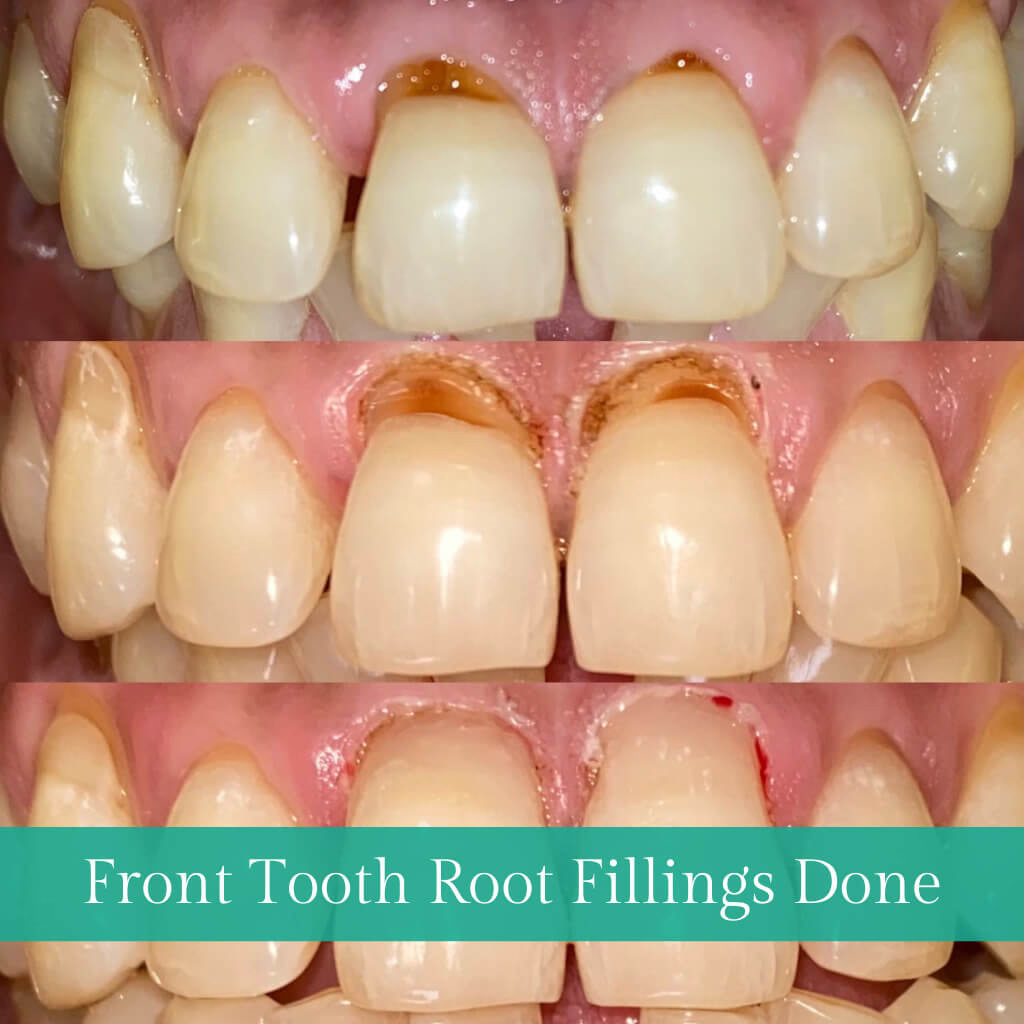Cavity fillings are one of the most routinely done procedures at dental clinics for patients across age groups. Have you ever wondered what actually happens when you get a cavity filled?
Cavity fillings are a fundamental aspect of modern dentistry, essential for treating and restoring teeth affected by decay. Understanding the detailed process involved in a cavity filling can alleviate concerns and provide clarity on this standard dental procedure.
This blog will lead you through every step of the cavity-filling process, emphasizing the careful attention and precision involved in restoring your dental well-being. Let's explore how a cavity filling works and why it is crucial for preserving your smile.
Key Takeaways:
- Thorough Examination: Dentists use visual inspections with magnification and X-rays to detect cavities accurately.
- Pain Management: Local anesthesia (such as lidocaine or articaine) may be applied to numb the area, ensuring you stay comfortable during the procedure.
- Precise Decay Removal: Specialized tools are used to remove only the decayed part of the tooth.
- Filling Application: The filling material is carefully placed and shaped to restore the tooth's natural look and function.
- Essential Aftercare: Good oral hygiene and regular dental visits are vital for keeping your fillings in good condition and preventing future decay.
1. Initial Assessment: Diagnosis and Examination
Before proceeding with a cavity filling, your dentist conducts a thorough examination to assess the condition of your teeth:
- Visual Inspection: The dentist examines each tooth's surface for signs of decay, such as discoloration, pits, or visible holes/ loss of mineral from the tooth, using specialized tools like dental mirrors and probes.
- X-ray Examination: X-rays provide a more detailed view of the teeth, revealing cavities hidden between teeth or under existing fillings. This diagnostic tool helps in accurately assessing the extent and location of decay, guiding treatment decisions.
2. Administering Local Anesthesia (such as lidocaine or articaine)
To ensure your comfort and safety during the procedure, your dentist may use a local anaesthetic (such as lidocaine or articaine) near the affected tooth. This numbs the area, preventing you from feeling any pain or discomfort during treatment. Only cavities that have deep decay nearing the nerve lead to the need for use of local anesthetics.
3. Decay Removal: Precision and Preservation
Once the tooth is numb, the dentist proceeds to remove the decayed portion using precise tools and techniques such as:
- Dental Drill: A dental drill with various attachments is used to remove decayed tooth material. This tool allows for the precise removal of decay while preserving healthy tooth structure.
- Laser Dentistry: In dental practice, lasers can also be employed in various cases to remove decay and perform other treatments with enhanced precision and comfort. Use of lasers to remove decayed tooth structure helps in ensuring minimal disruption to the healthy tooth structure. Compared to traditional drilling methods, they can precisely target and remove decay while preserving a more healthy tooth structure. Lasers are gentle on tooth structure and can help reduce the risk of microfractures that sometimes occur with traditional drilling methods. This is particularly beneficial for teeth with thin enamel or those that are more prone to fractures. The precise preparation can enhance the bonding strength of dental fillings to the tooth structure. This results in durable restorations that are less likely to require replacement or repair in the future.
Advancements in technology are continually expanding the application of lasers in dentistry. Laser technology provides patients with minimally invasive treatment options that result in less discomfort and quicker recovery times than traditional methods.
4. Preparing the Tooth Surface
With the decay removed, the dentist meticulously prepares the tooth for the filling:
- Cleaning and Sterilization: The cavity is cleaned to remove any remaining debris and bacteria. Proper cleaning ensures a clean surface for the filling material and reduces the risk of future decay.
- Choosing the Filling Material: Your dentist chooses the suitable filling material, considering factors such as the cavity's location, aesthetic preferences, and durability needs. Standard options include composite resin, amalgam (silver-coloured) or glass ionomer cements.
5. Placing and Shaping the Filling
Once the filling material is chosen, it is placed into the cleaned cavity and shaped to restore the natural contours and functionality of the tooth:
- Placement: The filling material is carefully placed in layers into the prepared cavity, ensuring that each layer is bonded correctly and hardened.
- Sculpting: The dentist sculpts the filling to mimic the natural anatomy of the tooth, ensuring a comfortable bite and natural appearance. This step is crucial for restoring proper chewing function.
6. Polishing and Final Adjustments
After placing the filling, the dentist meticulously polishes it to achieve a smooth surface and makes final adjustments:
- Polishing: Irregularities and any excess filling material are smoothed away to ensure a seamless blend with the natural tooth surface. This helps prevent plaque buildup and enhances oral hygiene.
- Bite Adjustment: Final adjustments are made to ensure your bite feels natural and comfortable. The dentist checks the alignment and occlusion (how your teeth fit together) to ensure proper function.
7. Post-Filling Care and Instructions
Once the cavity filling is completed, your dentist provides comprehensive aftercare instructions:
- Oral Hygiene Practices: Guidance on brushing with fluoride toothpaste twice daily and flossing daily to maintain oral health and prevent future cavities.
- Dietary Recommendations: Advice on reducing sugar intake and maintaining a good balanced diet to support oral health and avoid tooth decay.
- Follow-Up Visits: Scheduled appointments are recommended to monitor the filling's integrity and overall oral health. Regular check-ups help detect any issues early and ensure the longevity of the filling.
Benefits of Cavity Fillings:
- Preservation of Tooth Structure: Fillings help preserve the natural tooth structure by replacing decayed material and restoring the tooth's strength.
- Prevention of Further Decay: Seals of the cavity, preventing bacteria from entering and causing additional damage to the tooth.
- Aesthetic Enhancement: Contemporary filling materials seamlessly blend with the natural teeth, enhancing the aesthetics of your smile.
FAQ'S
Conclusion
And there you have it! The whole process of getting a cavity filled, from start to finish, is more manageable than it might seem. With a better understanding of each step, you can feel more at ease the next time you visit the dentist. Remember, keeping up with good oral hygiene and regular check-ups can help prevent cavities and keep your smile looking its best. If you're looking for a friendly and expert dental team, swing by Hope Dental & Esthetic Clinic, Noida. We're here to make sure your dental experience is comfortable and that your smile stays bright and healthy.




